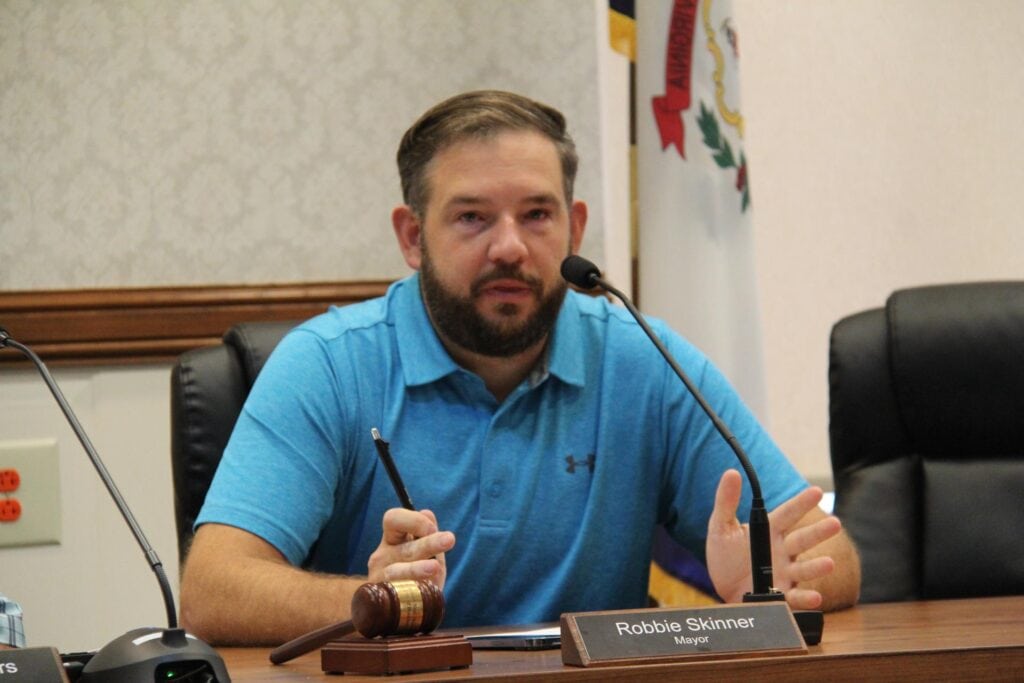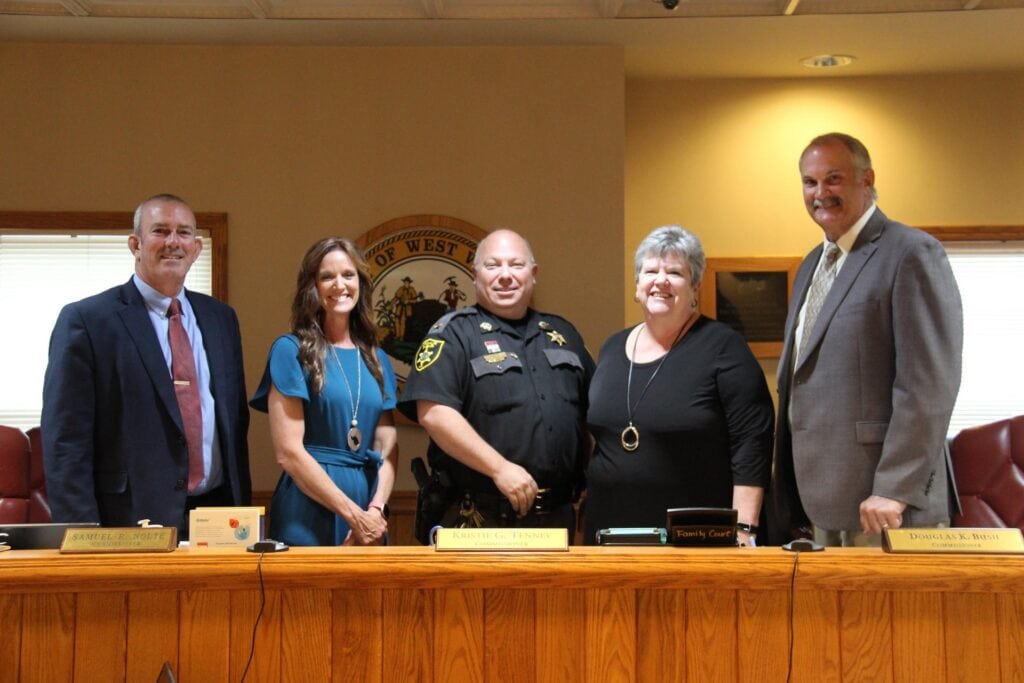Editor’s note: This story was originally published by Mountain State Spotlight. Get stories like this delivered to your email inbox once a week; sign up for the free newsletter at https://mountainstatespotlight.org/newsletter
By Alexa Beyer, Mountain State Spotlight
DAVIS — It was the quiet hour before Sirianni’s Pizza Cafe opened, and Walt Ranalli was rushing from the dining area to the storage room, carrying boxes that a supplier had left earlier that morning. The wood-paneled walls of the restaurant are decked with framed professional ski posters from the 80s and a portrait of Tucker County High School’s Mountain Lion of the year.
In a few hours, every table at Sirianni’s would be full. Tourism in Canaan Valley is thriving, even in the off-season and even without a highway exit nearby.
“If the powers that be want us to look like ‘everywhere-else America,’ I guess that’s how we’re gonna end up looking,” Ranalli said. He tapped the table for emphasis: “They don’t realize that that’s not why people come here. People come here because it doesn’t look like everywhere-else America.”
That’s why Ranalli is worried about Corridor H.
The long-planned project will stretch from I-79 near Weston, to the Virginia state line, across Tucker, Grant and Hardy counties. It is part of a network called the Appalachian Development Highway System that has been in the works since 1965 to better connect Appalachia with the rest of the country. Of the 24 highways in that system, Corridor H is one of the last to be completed. It’s also the one that West Virginians have argued about for decades.
Until recently, people in the region were divided about whether the highway should exist at all. Environmental groups and some area residents opposed the construction, saying the highway would destroy some of the most beautiful parts of West Virginia, fragmenting forests and changing the character of the small towns in the area for the worse.
But now, everyone seems to know the four-lane highway is coming. Most of Corridor H — stretching 117 miles — is open to traffic. So the fight is instead over where the most controversial, 10-mile section of the road will go. West Virginia Transportation Secretary Jimmy Wriston is set on the state’s long-preferred route, which would take the road directly between the towns of Davis and Thomas — and he doesn’t seem to be wavering from it.
“The completion of Corridor H is inevitable, we’re going to build that road,” he told lawmakers in September.
But many residents and business owners — previously not always on the same page when it came to Corridor H — have joined to press the state for an alternative, one that would divert the segment to the north of Davis and Thomas. They say this route would preserve the uniqueness that attracts people to the community in the first place, unlike the DOH’s plan.
“I think it’ll just ruin the whole flair of what we’ve been able to create here,” Ranalli said.
Nancy Luscombe prefaces her objections to the route the way many others do: by noting that she has no problem with the highway in general.
“Otherwise, there’s a big missing link: this highway’s coming across and then there’s a link that’s not done, and then it continues again? They need to finish that,” she said. Luscombe had just walked from home on the first snow-dusted morning of the season and was sitting at the lone table in Trailhead Coffee Shop in downtown Davis.
Soon after her daughter bought a second home in Davis in the fall of 2018, Luscombe’s partner of fifteen years passed away suddenly. Having come down here for decades from their home in Maryland, she decided to move to town full-time and live in the house, renting out one of the rooms as an Airbnb to help with the bills. Luscombe relies on out-of-towners continuing to see the community as a quaint, cute mountain town instead of a chain store depot.
“You’re imposing something on it that definitely could change the feeling,” she said. “The small town vibe. Small town feeling.”
But if preserving that small town feeling means changing Corridor H’s path to run north of the towns, the Division of Highways has said that it’s an expensive proposition. In 2007, the agency estimated that the cost of constructing the DOH’s preferred route from Parsons to Davis was $148 million; the alternative that avoided Davis, Thomas, and the entire Blackwater Canyon area would have increased the cost to $194 million.
The last time the DOH studied the route was in a 2007 Environmental Impact Statement. Generally, that process includes a robust study of alternative routes, to determine which has the smallest effect on the environment. But because of a lawsuit settlement between the Department of Transportation and the advocacy organization Corridor H Alternatives, the DOH was able to skip any consideration of other locations for this stretch of Corridor H.
Now, a decade and a half later, the DOH is working on an updated study of this final section, which is required under federal law due to the time elapsed since the last study. What is not clear is to what extent they will consider the northern route that avoids the towns.
And despite going through some of the motions, including a public comment period that’s open through Dec. 12, Wriston told state lawmakers earlier this year that feedback wouldn’t ultimately impact the decision.
“If we’re serious about minimizing impacts, if we’re serious about schedules, we can’t rethink these things,” he said to the joint committee that oversees the Department of Transportation.
That attitude is part of what angers some Canaan Valley residents.
“I think it’s obnoxious and annoying and makes people feel hopeless and helpless,” said Judy Rodd. Rodd, executive director of the environmental group Friends of the Blackwater, has spent the past several years building upon walking and biking trails that the highway would cross over, in part to make it clear that the area is a poor choice for a highway.
The Division of Highways has argued that the highway will boost tourism in the area by making it easier to access from other parts of the country. Many residents argue that it will instead ruin what attracts tourists in the first place.
“This place is used as a model for coolness,” Rodd said.
Tourism makes up 8.5% of Tucker County’s economy — the fifth-largest proportion of tourism revenue across West Virginia counties.
Despite these community concerns, Wriston has dismissed opposition to his preferred route, telling lawmakers earlier this year that the opposition is mostly due to the presence of a rare bumble bee species near where the state would like to build Corridor H.
“The particular issue that they brought to us was a bumble bee issue,” he said, referring to the U.S. Fish and Wildlife’s endangered species assessment of his proposal.
“Somehow two of the species were located about two hundred feet from the center line of the corridor…they seem to have an idea that the Appalachian version of this particular bee behaves differently and is a subspecies, which is ridiculous.”
But most of the proposed route’s most vocal opponents are more concerned about what will become of their communities once a giant highway bisects them.
If Corridor H follows Wriston’s preferred path, Jim Baczuk would live within eyeshot of the new road. And he’s worried about what that means for the house that he and his wife built on property sold to them by her grandfather.
Take the Blackwater River that runs parallel to their house:
“If we had the windows open, if it was warm, you’d be hearing that stream right now. And you’d hear it at one o’clock in the morning, five o’clock in the morning, 12 o’clock in the afternoon,” he explained. “And I don’t want to hear exhaust brakes on big trucks instead.”
And he’s not alone: over 2,700 people have signed his wife’s online petition in support of the Northern Route.
Some, like Rodd, worry about the effect on the environment.
The project will include an overpass bridge that runs over the Blackwater Canyon. The walking and biking trail, a popular waterfall, and a historical site where miners used to work would all be underneath the bridge, and a highway above head would likely drive some visitors away. Rodd is also concerned about the potential for the project to exacerbate acid mine drainage in the river, where orange chemical discharge leaches into the water and gathers in a pool by the banks.
Rodd says that the problem wouldn’t exist if the DOH were to take the northern route, because the terrain it would cross hasn’t been mined.
“Do you want some ugly old highway? I mean, you know, it’s gonna be ugly wherever they put it but it doesn’t have to be going over this beautiful little valley,” she said.
“Ruining our trail, causing more acid mine drainage and coming between the two towns.”
The DOH has taken public opinion on Corridor H into account before: it’s what led them to reconfigure a truck route so that trucks headed to and from the corridor will bypass the town of Thomas entirely instead of traveling on two-lane WV-32.
And though Wriston hasn’t focused much on articulating them, there are advantages to the DOH’s route: it’s cheaper and could be built quicker. And despite many in Davis and Thomas pushing for the northern alternative, there are people who agree that the state’s preferred route would indeed be better and easier. That includes Nora Howell, who sits on the Tucker County ambulance authority board.
It currently takes ambulance drivers 21 minutes to get from the ambulance station in Parsons to Thomas. Howell says if the DOH builds their preferred route, it would cut that drive to just over seven minutes. The northern route would take a little longer — nine-and-a-half minutes — plus the extra years required to build it would force ambulances to continue driving the 21-minute route in the meantime.
“Why wait years for a longer northern route when the more direct route can be started in 2024?” Howell asked.
An estimated $1.9 billion has been spent on Corridor H so far, and about $1.10 billion of work remains. Even though the DOH still doesn’t have all the money it needs to complete the highway, the agency soon could, depending on how it spends its money from the Infrastructure Investment and Jobs Act. The agency will receive $590 million for federal highway projects from the new law next year, as well as $40 million in funding specifically for Corridor H, according to a Federal Highway Administration spokesperson. She said that the DOH can expect to receive similar levels of funding through 2026, and that it is the state’s prerogative to decide what to do with that funding.
Back at Sirianni’s in downtown Davis, people have begun to trickle in, shedding winter coats and ordering the restaurant’s signature pizza pies and hoagies. Ranalli knows that one of his restaurant’s draws is its location: right in the middle of a quaint downtown nestled in the West Virginia mountains.
“Aesthetics are a big part of the tourism industry,” he said. “I mean, a big part, you know, of what places look like is why people come here.”
That’s what’s potentially at stake with Corridor H, he says.
Reach reporter Alexa Beyer at alexabeyer@mountainstatespotlight.org












